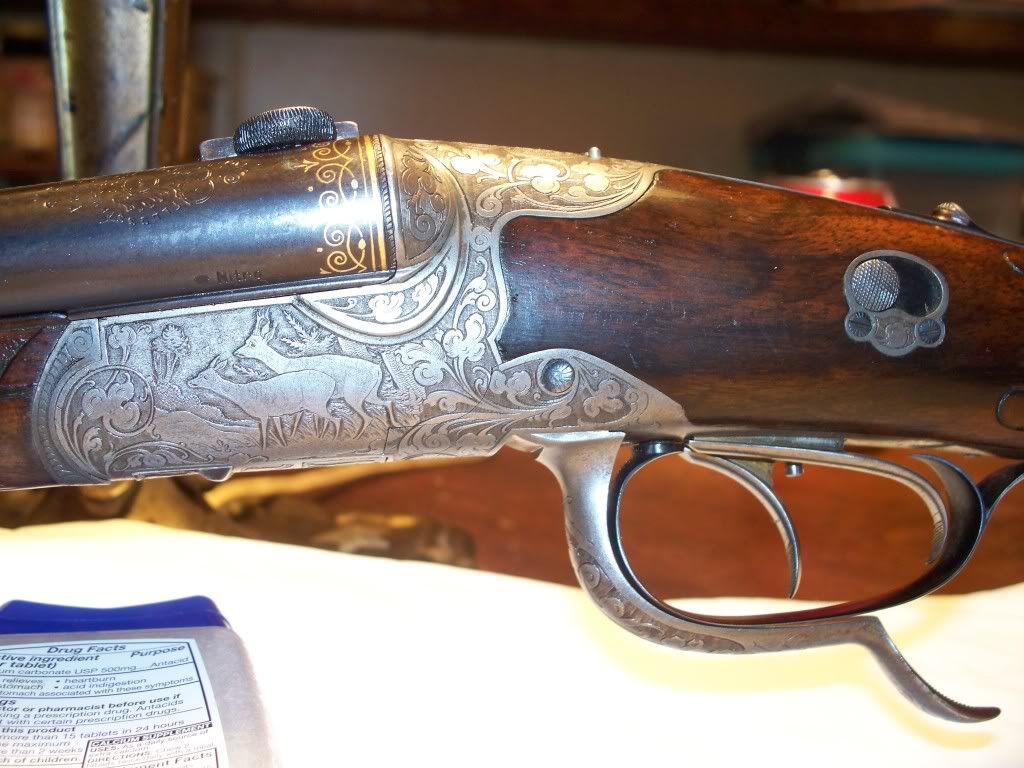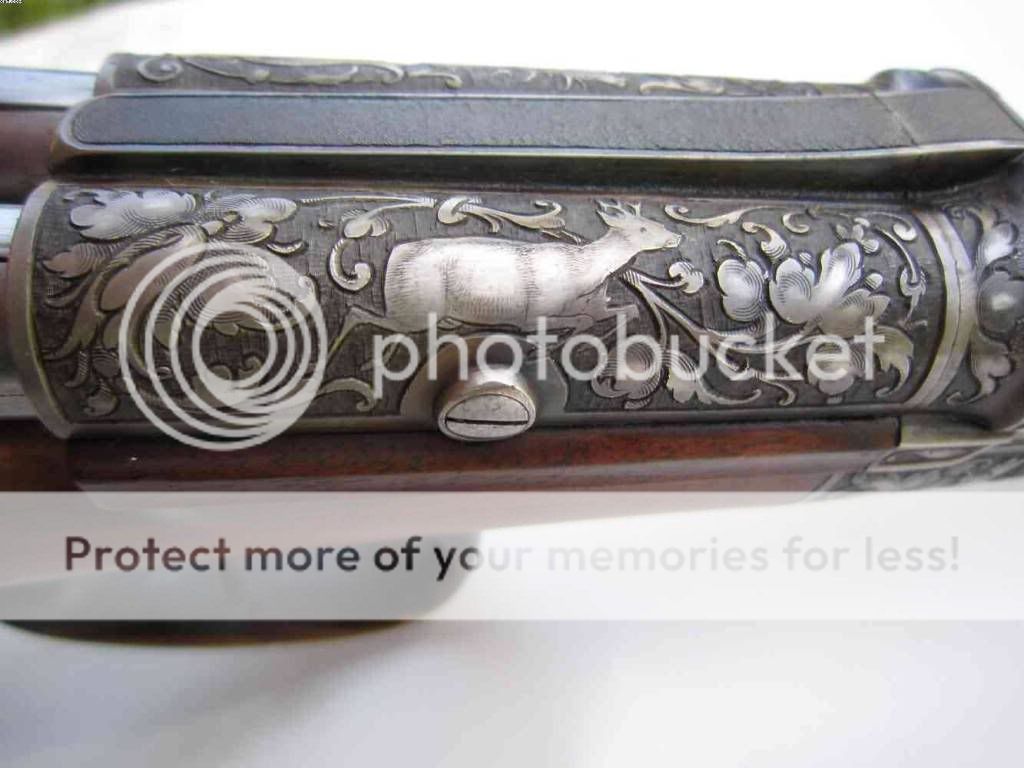Another Drilling to be Identified - Help Welcome - 07/14/10 09:42 PM
Friends,
I have another drilling similar to the one I posted all the pictures of in the other thread, only this one is in my opinion, "better".
I do not have photos of it but I have all the details an expert would need to give advice on the gun and to answer the questions I have.
The questions I have are as follows:
1. When was the gun made?
2. Was this gun proofed in Suhl or elsewhere?
3. What can I learn about the maker - A. Strover, Nordhausen (the O in strover has uhmlauts over it)
4. What pressures / types of loads are safe for the rifle?
5. Value? (obviously for that you'll need pictures to be provided at a later date)
6. I was told the gun is a .318 bore 8x57J rimmed cartridge and NOT a .323 bore 8x57JS. I believe this to be true because the gun is so light I would be uncomfortable using the higher power loads. If I do a bore cast and verify it is .318, does this give us any hints to the gun's age?
The facts as dictated by the proofs are as follows:
The shotgun barrels are proofed with the crown over S, W, and U respectively. (also Nitro proofed)
They are proofed with "circle 16" and an additional 16 which I believe is 16 gauge, Full choke for each barrel.
The rifle barrel has crown over N.
The rifle charge is listed as:
StmG
-----
13gr
The cartridge is listed as:
7.8mm
------
57
The two most interesting proofs on the gun that I do not understand are as follows:
-On the belly of the shotgun barrels, an outlined letter M is present on each barrel.
-On the rifle barrel, a fraction stated 1/29 is listed at the very bottom of the barrel near the breech. (could this be manufacturing date?)
-W.K. is stamped to the bottom of rifle barrel which I believe is the initials of the barrel maker.
-Barrels are labeled Krupp Laufstahl
-Serial number is 10402
-Maker or seller's name is found on the top of the barrels (not on the rib). "A. Strover" on one barrel and "Nordhausen" on the other.
-There are numerous duplicate stampings all over the proof area of the eagle shape that was used from 1912 onward.
***Those are all the markings and proofs on the entire gun. I won't be able to add pictures for weeks but that should be enough to describe the gun accurately. It is a Henri Roux type breech that looks nearly IDENTICAL to the other gun I provided photos of with the exception being that this one has a Greener style safety and is in much better condition.
I have another drilling similar to the one I posted all the pictures of in the other thread, only this one is in my opinion, "better".
I do not have photos of it but I have all the details an expert would need to give advice on the gun and to answer the questions I have.
The questions I have are as follows:
1. When was the gun made?
2. Was this gun proofed in Suhl or elsewhere?
3. What can I learn about the maker - A. Strover, Nordhausen (the O in strover has uhmlauts over it)
4. What pressures / types of loads are safe for the rifle?
5. Value? (obviously for that you'll need pictures to be provided at a later date)
6. I was told the gun is a .318 bore 8x57J rimmed cartridge and NOT a .323 bore 8x57JS. I believe this to be true because the gun is so light I would be uncomfortable using the higher power loads. If I do a bore cast and verify it is .318, does this give us any hints to the gun's age?
The facts as dictated by the proofs are as follows:
The shotgun barrels are proofed with the crown over S, W, and U respectively. (also Nitro proofed)
They are proofed with "circle 16" and an additional 16 which I believe is 16 gauge, Full choke for each barrel.
The rifle barrel has crown over N.
The rifle charge is listed as:
StmG
-----
13gr
The cartridge is listed as:
7.8mm
------
57
The two most interesting proofs on the gun that I do not understand are as follows:
-On the belly of the shotgun barrels, an outlined letter M is present on each barrel.
-On the rifle barrel, a fraction stated 1/29 is listed at the very bottom of the barrel near the breech. (could this be manufacturing date?)
-W.K. is stamped to the bottom of rifle barrel which I believe is the initials of the barrel maker.
-Barrels are labeled Krupp Laufstahl
-Serial number is 10402
-Maker or seller's name is found on the top of the barrels (not on the rib). "A. Strover" on one barrel and "Nordhausen" on the other.
-There are numerous duplicate stampings all over the proof area of the eagle shape that was used from 1912 onward.
***Those are all the markings and proofs on the entire gun. I won't be able to add pictures for weeks but that should be enough to describe the gun accurately. It is a Henri Roux type breech that looks nearly IDENTICAL to the other gun I provided photos of with the exception being that this one has a Greener style safety and is in much better condition.















